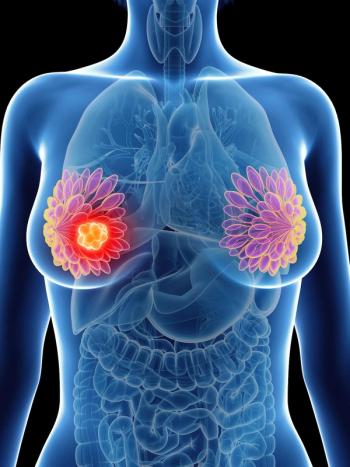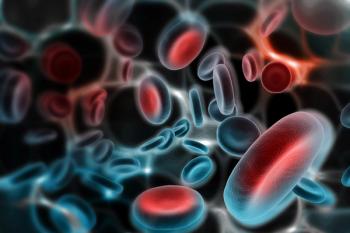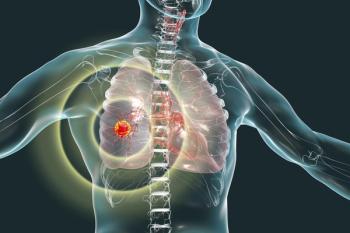
Zolbetuximab Has Benefit in Targeting CLDN18.2 in Gastrointestinal Cancers

The incorporation of zolbetuximab in addition to chemotherapy has shown benefit in patients with Claudin 18.2–positive gastric cancers in clinical trials.
After assessment of Claudin 18.2–targeting therapies for gastrointestinal (GI) cancers for some time, 2 clinical trials have displayed benefit among patients with Claudin 18.2-positive disease, according to John L. Marshall, MD.
CancerNetwork® spoke with Marshall, physician executive director of the MedStar Washington DC Integrated Hematology-Oncology Division and the Otto J Ruesch Center for the Cure of GI Cancers, and chief medical officer of the Lombardi Comprehensive Cancer Center at Georgetown University, about what the
Marshall emphasized a desire within the GI cancer field to develop therapies that treat new targets. He expressed a belief that the approval of zolbetuximab combination therapy in this patient population may benefit outcomes based on 2 clinical trials: the phase 3 SPOTLIGHT (NCT03504397) and phase 3 GLOW (NCT03653507) trials.2,3 He additionally highlighted an excitement to incorporate the therapy into practice in light of delays to the approval process.
Data from the phase 3 SPOTLIGHT trial published in The Lancet showed a median progression-free survival (PFS) benefit with zolbetuximab plus modified folinic acid, fluorouracil, and oxaliplatin (mFOLFOX6) vs FOLFOX6 alone; 10.61 months (95% CI, 8.90-12.48) and 8.67 months (95% CI, 8.21-10.28), respectively (HR, 0.75; 95% CI, 0.60-0.94; P = .0066). Additionally, 12-month PFS rates were 49% (95% CI, 42%-55%) vs 35% (95% CI, 28%-42%) in the respective arms; 24-month PFS rates were 24% (95% CI, 17%-32%) vs 15% (95% CI, 9%-22%).
Results from the phase 3 GLOW trial published in Nature Medicine showed a median PFS benefit with zolbetuximab plus capecitabine (Xeloda) and oxaliplatin (CAPOX) vs CAPOX alone; 8.21 months and 6.80 months, respectively (HR, 0.687; 95% CI, 0.544-0.866; P = .0007). In each respective arm, the 12-month PFS rates were 35% vs 19%, and the 24-month PFS rates were 14% vs 7%.
Transcript:
In GI cancers, we have been longing for new targets. We have been longing for new therapies. Finally, we are getting one. Claudin 18.2 has been out there for a while, and drug development targeting this has been going on for a while. Two big, randomized studies now support benefit [of zolbetuximab] in this patient population. Now, we are going to get the drug [approval]. We have been delayed a while by some other issues that have slowed the approvals, but we are excited, and we are all looking forward to incorporating [zolbetuximab] into our treatment paradigm.
References
- Astellas’ VYLOY™ (zolbetuximab-clzb) approved by U.S. FDA for treatment of advanced gastric and GEJ cancer. News release. Astellas Pharmaceuticals. October 18, 2024. Accessed October 23, 2024. https://tinyurl.com/5745k9a8
- Shitara K, Lordick F, Bang Y-J, et al. Zolbetuximab plus mFOLFOX6 in patients with CLDN18.2-positive, HER2-negative, untreated, locally advanced unresectable or metastatic gastric or gastro-oesophageal junction adenocarcinoma (SPOTLIGHT): a multicentre, randomised, double-blind, phase 3 trial. Lancet. 2023;401(10389):1655-1668. doi:10.1016/S0140-6736(23)00620-7
- Shah MA, Shitara K, Ajani JA, et al. Zolbetuximab plus CAPOX in CLDN18.2-positive gastric or gastroesophageal junction adenocarcinoma: the randomized, phase 3 GLOW trial. Nat Med. 2023;29:2133-2141. doi:10.1038/s41591-023-02465-7
Newsletter
Stay up to date on recent advances in the multidisciplinary approach to cancer.


















































































